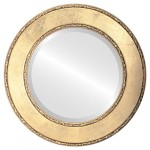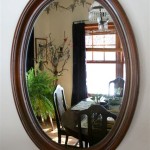How to Mirror Your Apple Computer to a Samsung TV
Mirroring an Apple computer screen to a Samsung TV offers a convenient way to view presentations, share photos and videos, or simply enjoy a more immersive computing experience. Several methods facilitate this process, catering to varying user preferences and equipment capabilities. This article outlines the steps and requirements for successfully mirroring your Apple computer to a Samsung TV, exploring both wireless and wired options.
Understanding Compatibility and Requirements
Before initiating the mirroring process, it is essential to ascertain compatibility between the Apple computer and the Samsung TV. Modern Samsung TVs generally support AirPlay 2, Apple's proprietary wireless streaming technology. AirPlay 2 compatibility allows for seamless mirroring from macOS devices running macOS Mojave (10.14.5) or later. Older Samsung TV models, or those lacking AirPlay 2 support, may necessitate alternative mirroring methods involving third-party applications or physical connections.
The Apple computer must also meet certain system requirements for optimal mirroring performance. A stable Wi-Fi connection is crucial for wireless mirroring, ensuring smooth video playback and minimal latency. For wired connections, the presence of a compatible video output port on the Apple computer, such as HDMI or USB-C, is a prerequisite. The corresponding cable, like an HDMI cable or a USB-C to HDMI adapter, is needed to establish the physical connection.
It's also important to ensure that both the Apple computer and the Samsung TV are connected to the same Wi-Fi network for wireless mirroring to function properly. Any firewalls or network security settings should be configured to allow communication between the devices. Failure to meet these basic requirements can result in connection problems or subpar mirroring quality.
Mirroring via AirPlay 2 (Wireless Method)
AirPlay 2 is often the simplest and most convenient method for mirroring an Apple computer to a Samsung TV, provided both devices are compatible. The process involves enabling screen mirroring directly from within macOS.
The first step is to ensure that AirPlay is enabled on the Samsung TV. The settings menu can usually be accessed via the TV remote. Navigate to the 'General' or 'Apple AirPlay Settings' section within the settings menu. Ensure that AirPlay is turned 'On'. You may also need to configure security settings for increased protection. Some TVs may require a code to be entered on the Apple computer before the mirroring can begin, whereas others might allow anyone on the network to mirror without authorization.
On the Apple computer, locate the AirPlay icon in the menu bar, typically represented by a rectangle with a triangle at the bottom. If the icon is not visible, it may need to be enabled in System Preferences. Navigate to 'Displays' in System Preferences, and ensure the 'Show mirroring options in the menu bar when available' box is checked.
Clicking the AirPlay icon in the menu bar reveals a list of available AirPlay devices on the network. Select the name of the Samsung TV from the list. The Samsung TV may display a passcode on the screen. If so, enter the passcode on the Apple computer to establish the connection. Once the connection is established, the Apple computer's screen will be mirrored onto the Samsung TV.
AirPlay offers several options for customizing the mirroring experience. It is possible to select the mirroring mode, choosing between 'Mirror Built-in Display' for a direct mirror or 'Use As Separate Display' to extend the desktop across both screens. The audio output can also be adjusted to play through the Apple computer's speakers or the Samsung TV's speakers, depending on the desired audio experience.
To stop mirroring, simply click the AirPlay icon in the menu bar again and select 'Turn AirPlay Off' or disconnect from the Samsung TV. The connection will be terminated, and the Apple computer will revert to its normal display settings.
Mirroring using Third-Party Applications
If the Samsung TV does not support AirPlay 2, or if alternative mirroring options are preferred, third-party applications can provide a viable solution. Several applications are available in the Mac App Store that facilitate screen mirroring to various devices, including Samsung TVs.
Applications like AirBeamTV and MirrorMeister are designed to wirelessly mirror the Apple computer screen to the Samsung TV. These applications typically require installation on both the Apple computer and the Samsung TV, or in some cases, only on the Apple computer. The process usually involves downloading and installing the app from the Mac App Store and, if necessary, downloading the corresponding app from the Samsung TV's app store. Some applications might require a one-time purchase or subscription fee to unlock full functionality.
Once the application is installed and launched, follow the on-screen instructions to connect the Apple computer to the Samsung TV. The process often involves selecting the Samsung TV from a list of available devices and entering a connection code if prompted. These applications may offer additional features, such as adjustable video quality, enhanced audio settings, and support for multiple devices. Some of these apps allow you to mirror specific applications instead of the entire display, which could be beneficial for some users.
These third-party applications often use proprietary protocols to establish the connection between the Apple computer and the Samsung TV. While these protocols may not be as efficient as AirPlay 2, they can provide a reliable mirroring experience, especially when AirPlay 2 is unavailable. It's recommended to research and compare different applications to find one that meets specific needs and performance requirements.
Mirroring via Wired Connection (HDMI or USB-C)
A wired connection provides a stable and reliable mirroring option, eliminating the potential for Wi-Fi interference or network instability. This method requires a compatible video output port on the Apple computer and a corresponding input port on the Samsung TV, typically HDMI.
Most modern Apple computers feature either an HDMI port or a USB-C port that supports video output. If the Apple computer has an HDMI port, a standard HDMI cable can be used to connect directly to the Samsung TV's HDMI input. If the Apple computer has a USB-C port, a USB-C to HDMI adapter will be necessary to facilitate the connection.
Connect one end of the HDMI cable to the Apple computer's HDMI port or the USB-C to HDMI adapter, and connect the other end to an HDMI input port on the Samsung TV. Once the connection is established, use the Samsung TV's remote to select the correct HDMI input source. The input source is typically labeled HDMI 1, HDMI 2, or a similar designation, depending on the port used.
After selecting the correct input source, the Apple computer's screen should automatically be displayed on the Samsung TV. If the display is not automatically detected, navigate to 'Displays' in System Preferences on the Apple computer. Click the 'Detect Displays' button to force the system to recognize the connected display. You may also need to adjust the arrangement of the displays, choosing whether to mirror the displays or extend the desktop across both screens.
The wired connection offers several advantages, including improved video quality and reduced latency compared to wireless mirroring. It also eliminates the need for a Wi-Fi network, making it a suitable option for environments with limited or unreliable Wi-Fi connectivity. While a wired connection may be less convenient than wireless mirroring, it provides a dependable and high-performance solution for displaying content from an Apple computer on a Samsung TV.
When using a wired connection, the resolution and refresh rate of the display can be adjusted in the 'Displays' section of System Preferences. The optimal settings will depend on the capabilities of the Samsung TV and the content being displayed. It's generally recommended to select the native resolution of the Samsung TV for the best image quality. You can adjust the placement of the screen through the arrangement settings. It is best to pick the arrangement that closely resembles your physical setup.

Best And Easy Ways To Mirror Mac Samsung Smart Tv

6 Ways How To Mirror Your Macbook Samsung Tv

How To Screen Mirror Macbook Samsung Tv

How Do I Mirror My Samsung To Mac Wireless With One App

Top 3 Awesome Ways To Mirror Mac Tv Without Apple

Screen Mirroring Mac Macbook To Samsung Tv Airbeamtv

How To Mirror A Mac Tv Osxdaily

14 Fixes For Screen Mirroring Mac To Samsung Tv Not Working Techwiser

7 Ways How To Screen Mirror Mac Samsung Tv

How To Connect Your Macbook Samsung Tv In Diffe Ways








